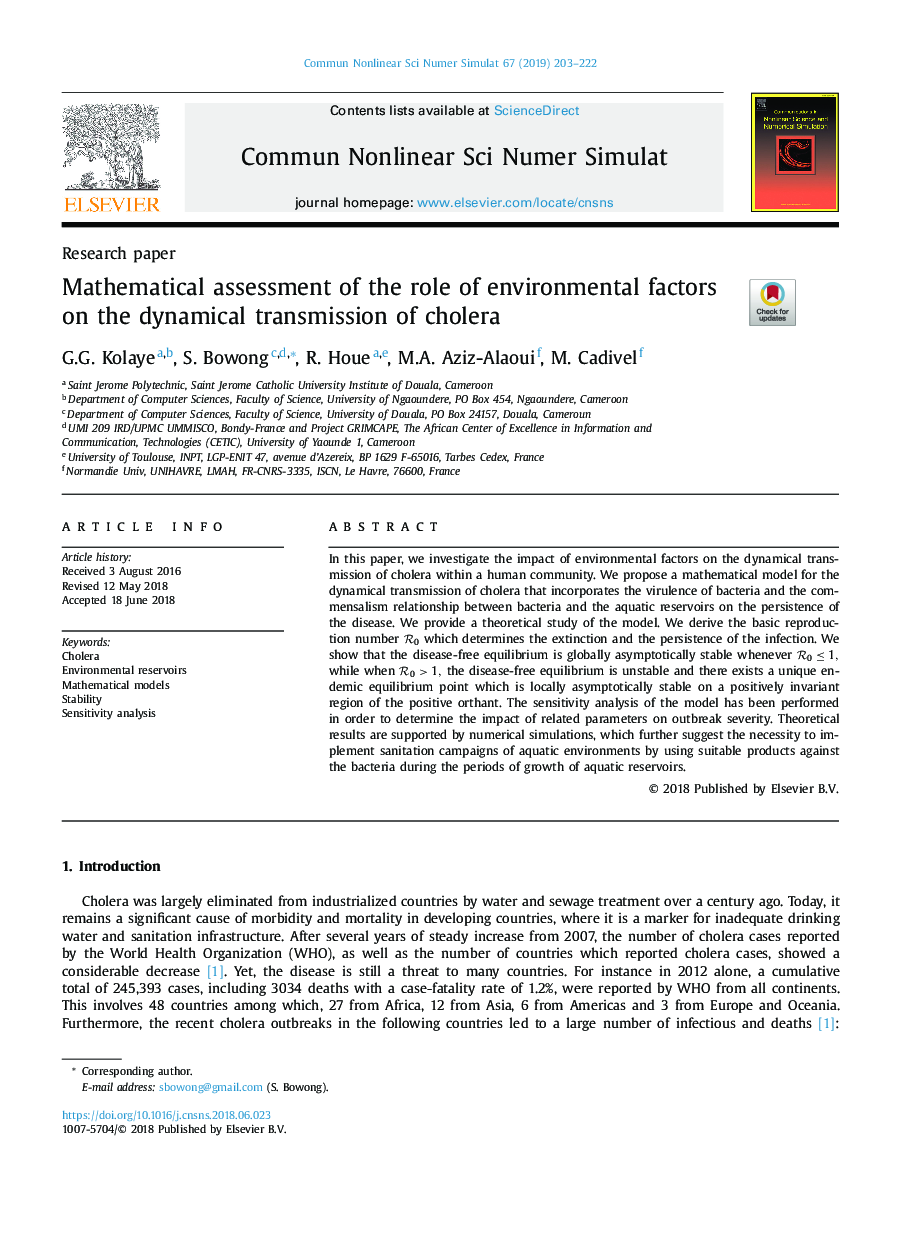| Article ID | Journal | Published Year | Pages | File Type |
|---|---|---|---|---|
| 11003756 | Communications in Nonlinear Science and Numerical Simulation | 2019 | 20 Pages |
Abstract
In this paper, we investigate the impact of environmental factors on the dynamical transmission of cholera within a human community. We propose a mathematical model for the dynamical transmission of cholera that incorporates the virulence of bacteria and the commensalism relationship between bacteria and the aquatic reservoirs on the persistence of the disease. We provide a theoretical study of the model. We derive the basic reproduction number R0 which determines the extinction and the persistence of the infection. We show that the disease-free equilibrium is globally asymptotically stable whenever R0â¤1, while when R0>1, the disease-free equilibrium is unstable and there exists a unique endemic equilibrium point which is locally asymptotically stable on a positively invariant region of the positive orthant. The sensitivity analysis of the model has been performed in order to determine the impact of related parameters on outbreak severity. Theoretical results are supported by numerical simulations, which further suggest the necessity to implement sanitation campaigns of aquatic environments by using suitable products against the bacteria during the periods of growth of aquatic reservoirs.
Related Topics
Physical Sciences and Engineering
Engineering
Mechanical Engineering
Authors
G.G. Kolaye, S. Bowong, R. Houe, M.A. Aziz-Alaoui, M. Cadivel,
